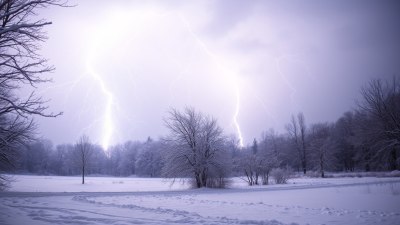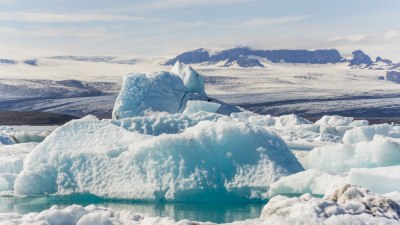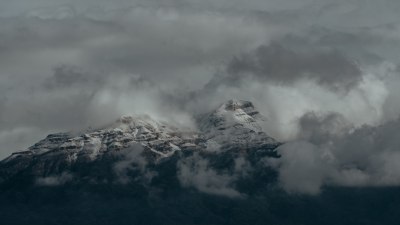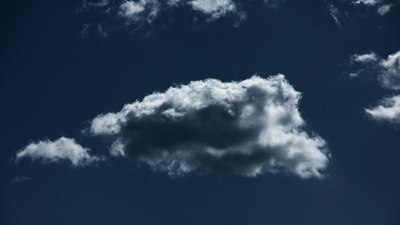What Causes Wind to Change Direction
Explore the factors that cause fluctuations in wind direction and their impacts on weather patterns.
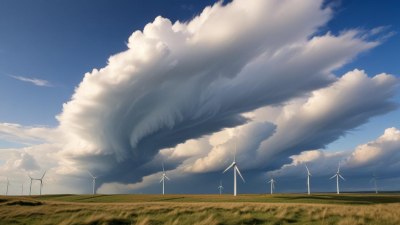
This image was created with the assistance of Freepik
Wind is a natural force that plays a crucial role in our planet’s climate and weather systems. Understanding what causes wind to change direction is vital for meteorologists, environmentalists, and anyone interested in the dynamics of our atmosphere.
The Basics of Wind Direction
Wind direction describes the direction from which the wind originates. For example, a north wind blows from the north towards the south. Wind is primarily caused by uneven heating of the Earth’s surface by the sun, creating areas of high and low pressure. As air moves from high-pressure areas to low-pressure areas, it creates winds.
Temperature Differences
The most fundamental cause of wind direction changes lies in temperature variations across different regions. The earth’s surface is heated unevenly due to factors such as geography, vegetation, water bodies, and urbanization. For instance, land heats up faster than water during the day and cools down faster at night. This differential heating leads to localized pressure systems. As warm air rises over heated land, it creates a low-pressure area, while cooler air over the water forms a high-pressure area. This temperature differential is a primary contributor to local wind patterns.
Time of Day
Wind direction can also change with the time of day. The phenomenon known as land-sea breeze is a perfect example of this. During the day, land heats up faster than the ocean, causing sea breezes as cooler air from the sea moves to replace the rising hot air over land. Conversely, at night, the land cools quicker, leading to land breezes where air flows from the cooler land to the relatively warmer sea. These daily temperature shifts can lead to significant changes in wind direction.
Geography and Topography
The geographical features of an area, including mountains, valleys, and large bodies of water, substantially affect wind patterns. Mountains can block or redirect winds, creating a phenomenon called orographic lift. When winds approach a mountain range, they are forced to rise, cooling as they ascend and causing precipitation on the windward side. This can change the wind direction as it descends on the leeward side, resulting in dry conditions often termed the rain shadow effect. Similarly, valleys may funnel winds in specific directions, leading to predictable wind patterns.
Coriolis Effect
The Coriolis effect is a crucial factor in determining wind direction, especially in large-scale weather systems. As the Earth rotates, moving objects—including air—are deflected to the right in the Northern Hemisphere and to the left in the Southern Hemisphere. This effect influences large-scale wind patterns, such as trade winds and westerlies, causing them to curve rather than blow in a straight line. The Coriolis effect is particularly significant in the formation of high and low-pressure systems, thereby altering wind direction.
Pressure Systems
High-pressure systems, often characterized by descending air, generally lead to clear skies and stable weather, while low-pressure systems, associated with rising air, typically bring clouds and precipitation. As these systems move and interact with one another, they can cause fluctuations in wind direction. For instance, as a high-pressure system moves into an area previously dominated by a low-pressure system, winds can shift direction dramatically.
Seasonal Changes
Seasons also play a vital role in wind direction changes. During summer, land heats up much more than oceans, creating strong pressure gradients. This phenomenon can lead to constant winds blowing from ocean to land, while winter changes the dynamics, causing winds to shift direction due to different temperature regimes. Seasonal monsoon winds, which bring heavy rainfall, are examples of how wind direction can change dramatically over the course of the year.
Weather Fronts
Weather fronts, which occur when two different air masses meet, can also cause notable changes in wind direction. A cold front, which brings colder air, will displace warmer air upward, often resulting in stormy weather and high winds. When a front passes through an area, the wind typically shifts direction. This is often noted in weather forecasts that predict wind changes associated with advancing fronts.
Human Activities
Human activities can impact local wind direction and its effects. Urbanization creates heat islands, wherein cities absorb and re-emit heat more effectively than surrounding rural areas. These heat islands can alter local pressure systems, changing directionally focused winds. Additionally, structures such as skyscrapers and large buildings can create turbulence, leading to wind patterns that differ significantly from their natural surroundings.
Climate Change
Long-term climate change also plays a role in shifting wind patterns and their directions. As global temperatures rise, new weather patterns emerge, altering existing wind systems. For instance, changes in wind direction can be observed concerning shifting ocean temperatures and rising sea levels, affecting weather events globally. Studies suggest that consistent changes in wind patterns may lead to more extreme weather events, including hurricanes and storms, as the climate continues to change.
In summary, the direction of wind is influenced by a myriad of factors, including temperature differences, geography, pressure systems, and human activities. Understanding these elements can enhance our comprehension of weather patterns and improve forecasting techniques. Keeping track of these variables allows meteorologists to predict wind behavior more accurately, both locally and across broader regions. Wind remains a critical component of our atmosphere, and its direction holds key information about upcoming weather phenomena.
